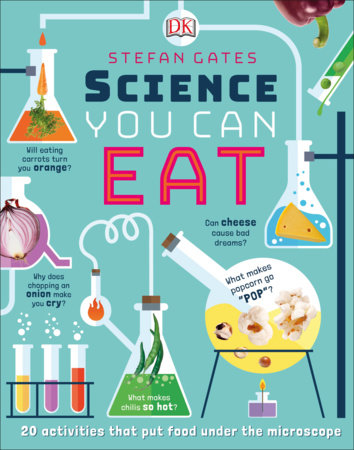Science You Can Eat:
How to Make Instant Ice Cream
by Stefan Gates
Need ice cream fast? Feeling lazy? Have some frozen strawberries? This super-quick recipe from Science You Can Eat: 20 Activities That Put Food Under the Microscope by Stefan Gates is so simple it’s almost unbelievable. All you need to do is keep some strawberries in the freezer in case of an ice cream emergency and let science do the hard work for you!
Fun Facts
- The Ancient Greeks are thought to have eaten an ice cream like mixture of snow, honey, and fruit. But ice cream was probably invented around 500BCE in Asia.
- During World War II some American Fighter pilots made DIY ice cream by strapping cans filled with ice cream mixture to their planes. They had an internal stirrer attached to the small propeller that turned in the air and agitated the liquid as it froze at high altitudes.
INSTANT ICE CREAM
Ingredients
- 1lb 2oz (500g) strawberries
- 9fl oz (250ml) cold plain yogurt or heavy cream
- 2 tbsp honey
- Food processor
Directions
1. Carefully remove the stalks from the strawberries and give them a quick chop. Put them in the freezer until totally frozen. (Or just cheat and buy frozen ones!)
If you’re not a fan of strawberries, almost any frozen fruit should work. Experiment to see which is your favorite.
2. Put the frozen strawberries in a food processor with the yogurt and honey. Carefully blend everything together until smooth then add your favorite toppings and serve. Thanks, science!

Why It Works
The cold from the strawberries is just enough to freeze the other ingredients, and the power of the food processor can force fat and water (which normally don’t mix well) to blend, mixing the fat in the yogurt or cream with the iced water inside the strawberries.
The Science
Ice cream is a colloidal emulsion—it contains milk fats mixed with milk protein, sugar, air, and ice (frozen water). After the ingredients are mixed it must be frozen quickly because slow freezing creates large, crunchy ice crystals that aren’t very pleasant to eat. Fast freezing, on the other hand, creates a lot of much smaller crystals, creating that smooth texture we know and love.

